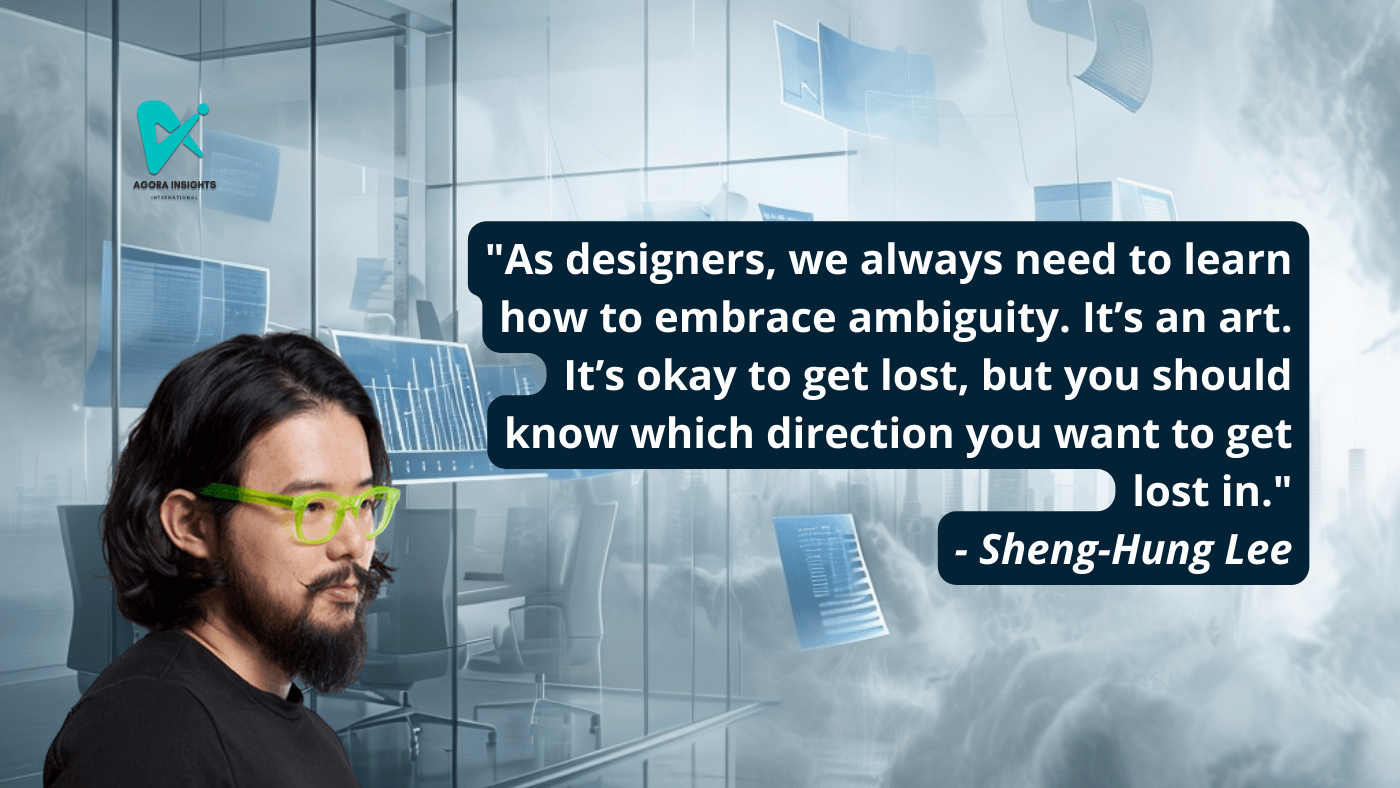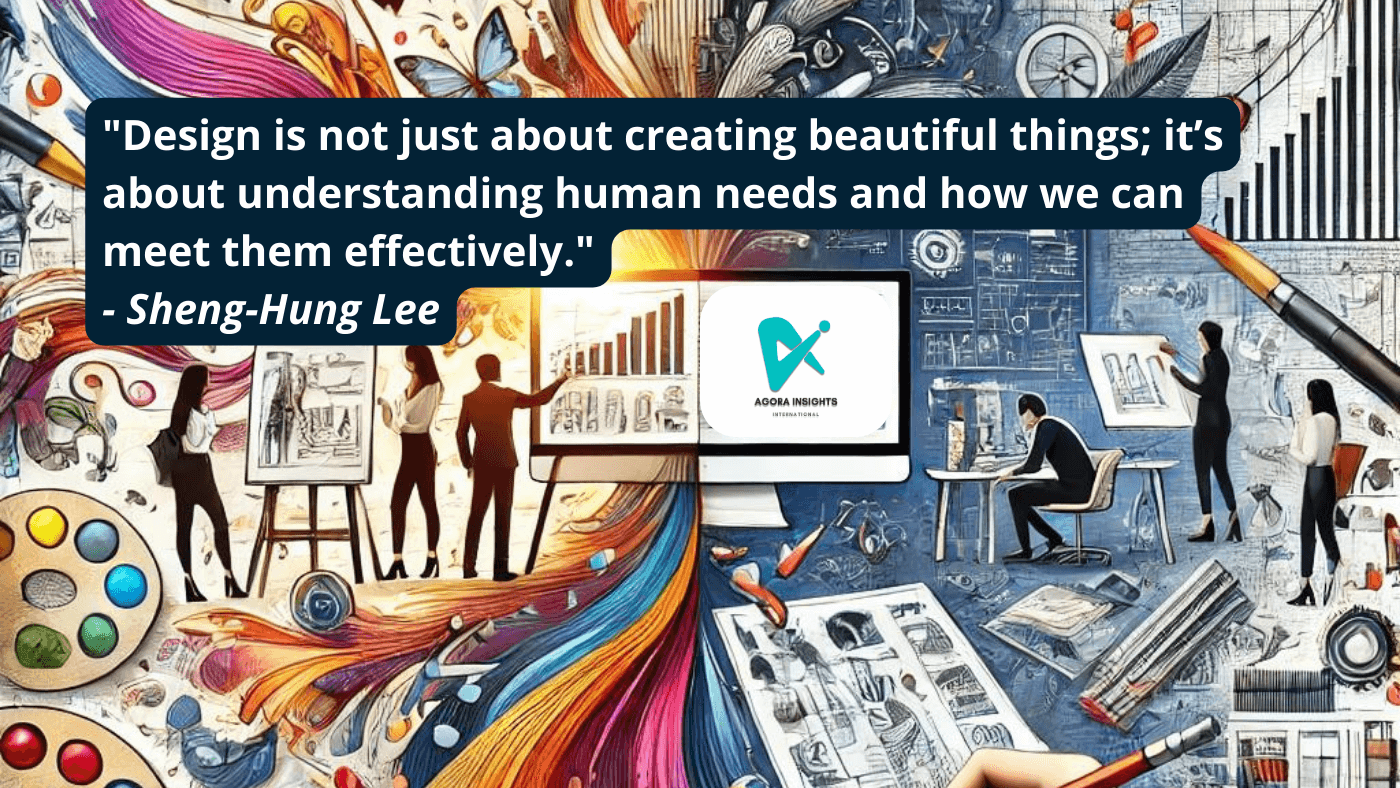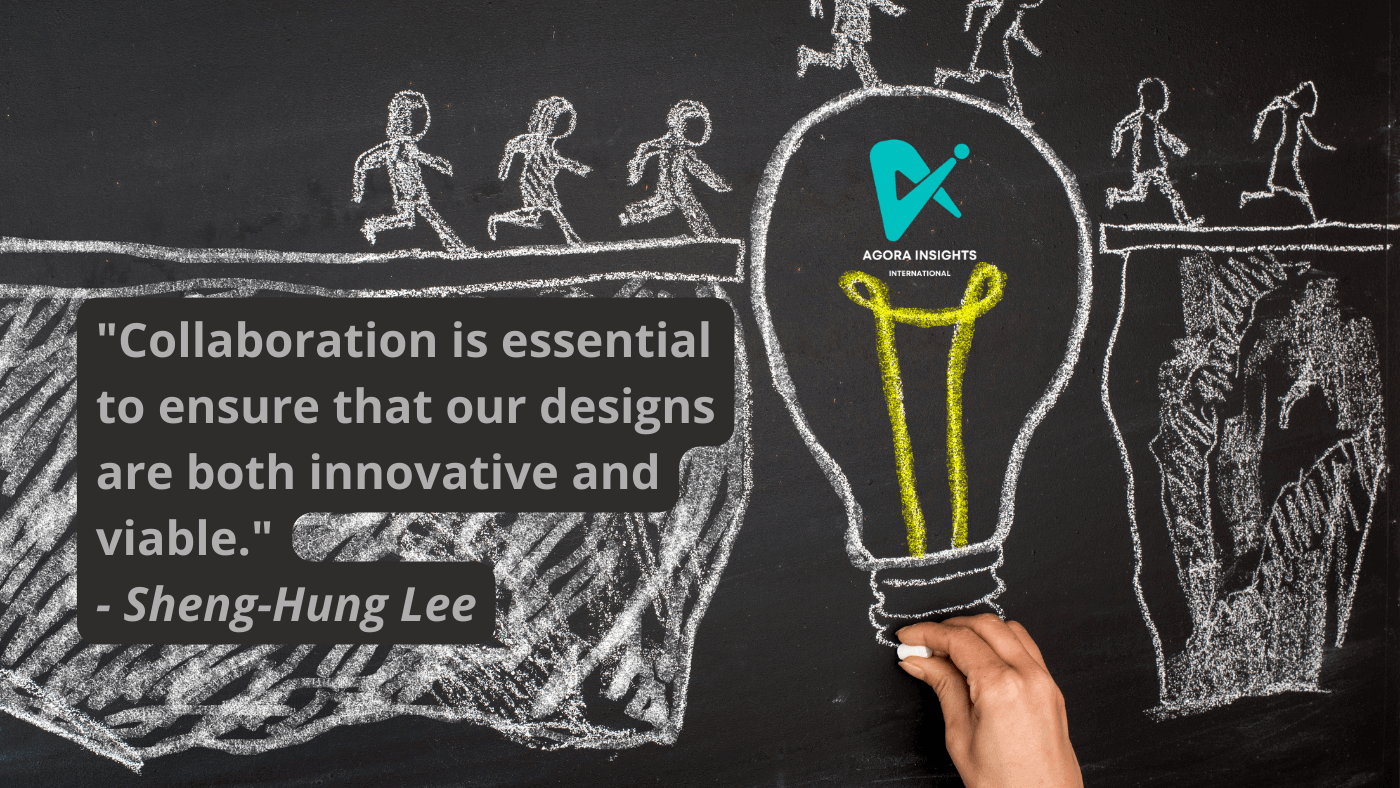
Hosted by Deirdre Caren on Agora Insights' Blueprints for Success: Business Architecture - Design for Longevity, Collaboration, Communication and Conceptual Thinking.
Introduction
I enjoyed my recent conversation with the innovative and passionate Sheng-Hung Lee, Board Director at IDSA and a designer and researcher at MIT. Seeped in design thinking and experience, he brings a unique perspective to the conversation about design's role in today's world. We explored the importance of design for longevity, emphasizing collaboration, communication, and conceptual thinking. Sheng-Hung's insights not only highlight the intricacies of the process but also serve as a guide for integrating design thinking into various industries.
Let's get started...
Background
Sheng-Hung Lee graduated with a dual Master’s degree (Hon.) at MIT Integrated Design & Management and the Department of Mechanical Engineering. Currently. He is currently pursuing a Ph.D. in Human Behavior and Service Design at MIT. He co-lectures for the MIT graduate course and serves as Adjunct Associate Professor at Shih Chien University. Sheng-Hung is a designer by training. His experience spans various roles, including a significant tenure at IDEO, where he honed his skills in human-centered design. Now at MIT, he is dedicated to exploring how design can contribute to longevity—both in products and services. His insights highlight the necessity of a multidisciplinary approach, where collaboration between designers, engineers, and business professionals is paramount.
He shares how he has worked on notable projects, such as redesigning the Shanghai Library's innovation space, where he facilitated co-creation workshops that engaged diverse stakeholders in the process. This hands-on experience emphasizes his commitment to empowering users and ensuring that their needs are at the forefront of decisions. I believe these insights will be helpful to both the business analysis and business architecture communities.
Key Topics
1. Design for Longevity
This topic was one of the most compelling themes in our discussions. Sheng-Hung emphasized the shift from the traditional linear approach—where products are created, used, and discarded—to a more circular approach that prioritizes sustainability and reuse.
He stated, “We are evolving and changing, and I feel that it really applies to most of my previous design projects.” This perspective encourages designers to think about the entire lifecycle of a product, considering how it can be reused or recycled. By adopting such an approach, designers can create solutions that are not only aesthetically pleasing but also environmentally responsible.
In the context of longevity, Sheng-Hung also pointed out the importance of analogous examples. He mentioned how professionals in various fields, such as gardeners and dentists, maintain health—whether it’s for gardens or teeth. This analogy can be extended to design, where a “longevity coach” could help individuals maintain their well-being through thoughtful practices.
2. Collaboration in Design
As we probed deeper into the role of collaboration, Sheng-Hung highlighted how multidisciplinary teams enhance the process. He shared an experience from a project where he worked with a team of aerospace engineers. “I’m a designer, I’m really good at visualizing ideas and concepts,” he explained. “We collaborate together. I draw the ideas, different scenarios, and I need you to evaluate — Is this viable?”
This collaborative spirit is essential, especially when addressing complex problems that require diverse skill sets. By combining the strengths of various disciplines, teams can create more robust solutions. As Sheng-Hung noted, “You have beautiful dreams, but it’s just a dream” if there isn’t a practical framework to support those ideas.
3. Communication and Conceptual Thinking
Effective communication is another critical component of the process. Sheng-Hung acknowledged the challenges designers face when presenting prototypes to stakeholders who may not understand the iterative nature involved in this field. “When people take things so literally, it can be challenging,” he remarked.
To bridge this gap, he emphasized the importance of raising curiosity and interest among team members. “As designers, we still need to study and do the homework,” he said. “It’s about showing tangible outcomes to facilitate conversation.” By providing clear visual representations and maintaining an open dialogue, designers can help others understand the underlying concepts and the rationale behind their designs.
This approach is particularly relevant in business architecture, where conceptual thinking is vital. As Sheng-Hung pointed out, “This drawing doesn’t mean it’s a house. It’s a concept.” This distinction is crucial for ensuring that stakeholders appreciate the potential of a 'drawing' without getting bogged down in details that may not yet be relevant.
"What’s missing in many environments is trust. It’s essential for fostering collaboration and effective communication among team members."
- Sheng-Hung Lee
Ten Learning Points
- Embrace Design for Longevity: Shift from linear to circular thinking to prioritize sustainability and reuse.
- Utilize Analogous Examples: Draw inspiration from other fields to inform practices and concepts.
- Foster Multidisciplinary Collaboration: Encourage teamwork across various disciplines to enhance innovation and practicality.
- Visualize Ideas Effectively: Use sketches and prototypes to communicate concepts clearly and facilitate dialogue.
- Raise Curiosity: Engage team members by fostering an environment of curiosity and open communication.
- Balance Aesthetics and Functionality: Ensure that designs are not only visually appealing but also practical and viable.
- Educate Stakeholders: Help non-designers understand the iterative nature of this process through clear explanations and visual aids.
- Iterate and Refine: Continuously improve designs based on feedback and new insights.
- Prioritize Human-Centric Design: Focus on understanding user needs and behaviors to create meaningful solutions.
- Adapt to Change: Stay agile and ready to pivot as new challenges and technologies emerge.
"We need to adapt to a new norm where flexibility is key, and we’re no longer tied to a single company."
- Sheng-Hung Lee

Close
In conclusion, my conversation with Sheng-Hung illuminated the vital role of design in addressing contemporary challenges. By embracing longevity, fostering collaboration, and enhancing communication, designers can create solutions that not only meet immediate needs but also contribute to a sustainable future. As we move forward, it is essential to keep these principles at the forefront of our design practices, ensuring that we not only think outside the box but also create new boxes that can adapt and thrive in an ever-changing world.
Feel free to share in our Blueprints for Success Podcast or comment with any questions!

To get weekly videos and interviews from leaders around the world, subscribe to our Blueprints for Success Newsletter on LinkedIn
Just a reminder that Agora Insights and now Aidon.ai open up a world of learning and AI-Assisted Solutions for Business Architects, Analysts, Strategists, and Business Leaders. Contact us for a demo.
To watch more videos, visit YouTube.
Interested in business architecture and business analysis certification, corporate and AI training? Go to our website www.agorainsights.com
Contact Deirdre Caren on LinkedIn
ABOUT
Sheng-Hung Lee is a passionate designer and researcher currently working at MIT, where he focuses on service design and human behavior. With a background that includes a significant tenure at IDEO, Sheng-Hung brings a wealth of experience in applying design thinking to real-world challenges. He is dedicated to fostering innovation through collaboration across disciplines, believing that effective design must prioritize human needs and sustainability.
- Sheng-Hung Lee on LinkedIn
- Sheng-Hung Lee's Official Website
- Design for Longevity: A dedicated page on his website which explores his approach to 'design for longevity', focusing on financial planning service systems and immersive technologies.
- Sheng-Hung Lee at MIT AgeLab: Information about his role at MIT and his research interests.
Related Articles and Presentations
- Designing for Longevity with Sheng-Hung Lee - YouTube: - including empathy and the impact of AI.
- Sheng-Hung Lee Presents on Design for Longevity at Venice Conference: A blog post about his presentation at a conference.


Post a Comment